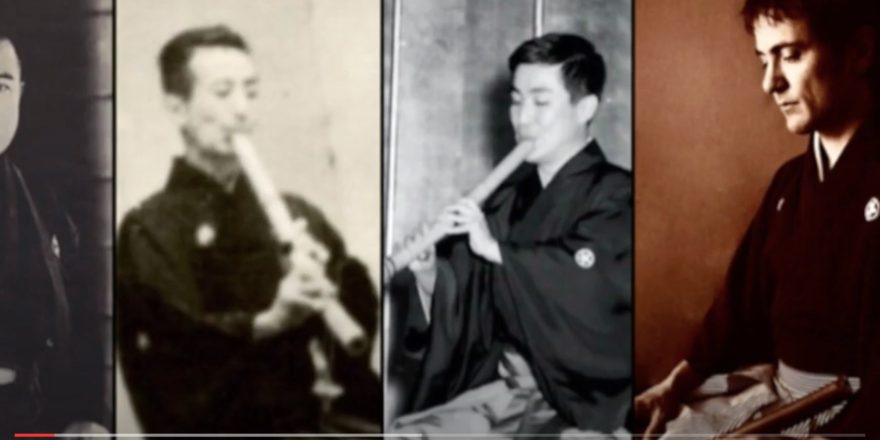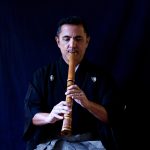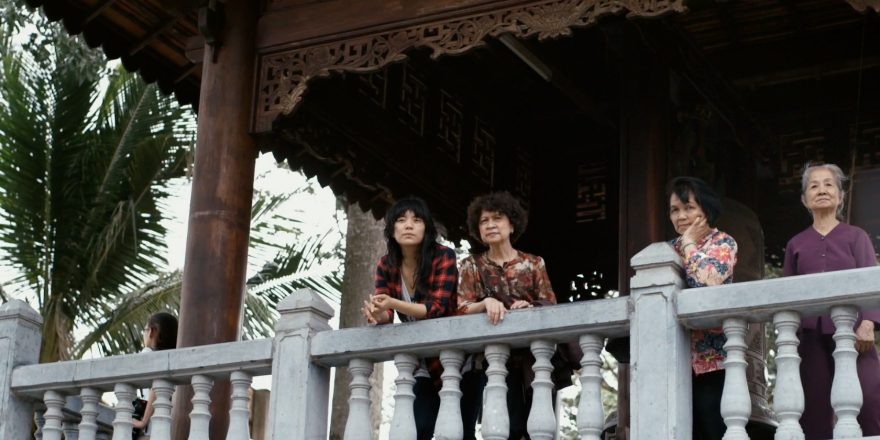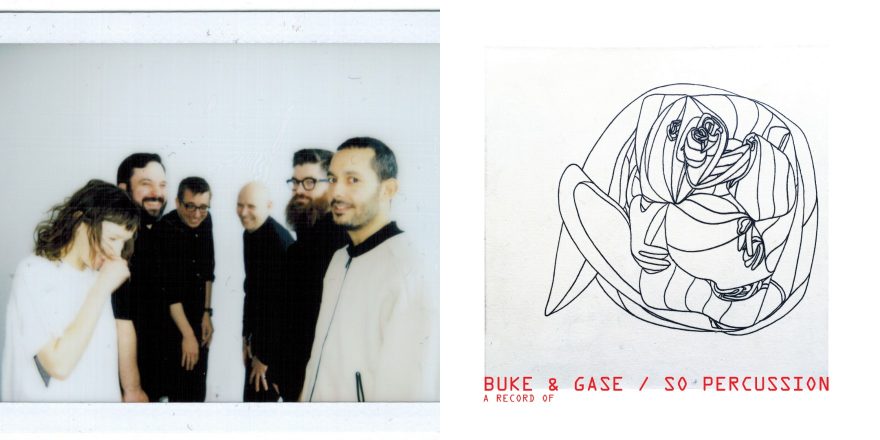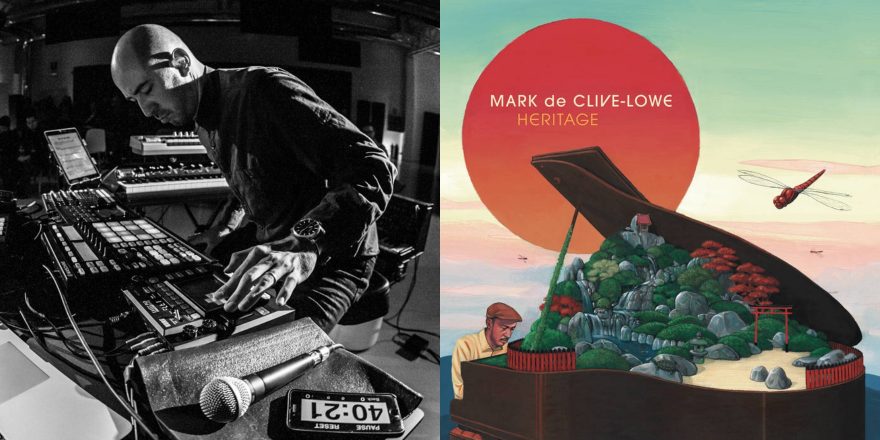I don’t ask people to use my full name. I have always tried to spare people the experience of attempting, even enthusiastically, to pronounce it correctly. I go by “Hanz.” This creates immediate confusion about my parentage, though, because I am 5’5” and brown. You’re right, I don’t look German. No, my mother is not German. No, she’s not Swiss either. To further complicate things, for the last 20 years, my primary musical focus has been traditional Irish music. I don’t look like a “Hanz,” I don’t look Japanese, and I don’t look like an acceptable example of an Irish person (despite my Irish immigrant great-grandparents). There is an entire other essay to be written about American expectations of Irish musicians, but for now I’ll stick to Japanese music.
My full name is Hanzaburō Araki and I was born in Middletown, Connecticut to Tatsuya Kodō Araki of Tokyo, Japan, and Charlotte Gallagher Campbell of Seattle, Washington. My father holds a degree in music from the prestigious Keiō University in Japan, and a Master of the Arts in Ethnomusicology from Wesleyan University, which he attained around the time of my birth. He is a fifth generation sōke — the grandmaster that serves at the head of a guild — of the shakuhachi, a traditional end-blown bamboo flute of Japan.
I was named for Kodō II, also born Hanzaburō Araki to a samurai class family of Lord Akitomo Katō of Minakuchi Castle in 1823, 30 years before Japan would open to the West. Japan in my great-great-grandfather’s time saw the end of the Edō Period. From the opening of Japan in 1853 to the Meiji Restoration of 1868, Westernization was given top priority, and many traditional art forms were banned, including the shakuhachi. Without Kodō II, it could be argued that the shakuhachi would have gone functionally extinct as it was specifically banned due to its popularity among the Tokugawa shogunate, the primary collective opposition to the Emperor.
Professional names are an important custom among practitioners of Japanese arts, and the name Kodō is part of that tradition. It has been in my family since the middle of the 19th century. It is a name synonymous with Kinkō-ryū, or Kinkō-style shakuhachi playing, and is the oldest guild in shakuhachi music. I took up the shakuhachi in 1988 and was given the professional name Baikyoku until my father’s retirement. In 2009, I became Kodō VI.
Studying under my father and serving as his apprentice gave me insight into some of the struggles he faced during his time in academia. Of the many stories I have heard, one that has indelibly written itself on my memory is when he was told directly by an ethnomusicology professor that he would never truly understand Japanese music as he was “just a musician” and not a scholar. (The professor in question was a white male.) I vowed to avoid academia and committed myself to being a performer first and taught only when time allowed.
I have devoted over 30 years to this craft, though not singularly. My deep and abiding love of traditional Irish music has made it my primary source of employment for more than 20 years. That does not erase my accomplishments in Japanese music, nor does it diminish my ability on the shakuhachi. While my path as a musician forked, I remain as committed to the instrument and the tradition as I have been at any point in my life.
The isolation over the past year gave rise to a long period of introspection and not a small amount of nostalgia. I have never enjoyed playing solo, but that was, and as of this writing, is still my only option. Not having any of my peers to share music with, I found myself playing the shakuhachi more and more. I was teaching more, and nearly all my students were seeking instruction in shakuhachi. And, in an unlikely turn of events, an instrument made in 1904 by my namesake appeared on the market. These flutes are arguably the most prized of their kind and rarely make it into the hands of actual players. Instead, they are ferreted away under the lock and key of collectors. Despite the work stoppage, I made the choice to bring this flute back to my family. It seemed like forces beyond my control were steering me back into Japanese music.
My time in Japan, from 1988 to 1992, was challenging. There is a history of xenophobia in Japan that I hope is in its final throes. While I was there, I was a novelty. Not fully Japanese, and not fully Western, therefore never fully accepted. My accomplishments and training had been more rigorous than my predecessors, but I would be “otherized” by colleagues, audience, and acquaintances. Despite fluency in the language, people would speak to the closest Japanese person to me in hopes that they would translate. In addition to that cultural challenge, there is a weight and expectation to legacy. Would I be able to carry this weight? How would I contribute to this legacy? At what cost?
There is an additional legacy in our family. One of generational fracture. My great-grandfather, Kodō III (Shinnosuke), who is widely acknowledged as the greatest shakuhachi player of all time, died not long after his 56th birthday, leaving his son, Kodō IV (Atsumu) at the head of the guild with no guidance. Atsumu would die at age 42, when my father was only 5 years old, forcing Kodō V (Tatsuya), into music study very early under his father’s colleague, to make his debut at the age of 12, so that a Kodō would remain at the head of our guild. As every generation emerged, it has had to define itself without the experience and wisdom of its predecessors. My own father’s career ended in ignominy after he suffered a severe mental collapse recording an exhaustive compendium of traditional music. While I am, in practicality, the sōke of the Kodō-kai (the family guild), no acknowledgement of that has been made, and my father and I have not played music together nor spoken of music since 2002.
Dipping my toe back into these waters has not been simple. Erasure has had an indelible effect on the perception of me and my position, both to the world of shakuhachi and also, frankly, to myself. At age 50, I struggle with the requirement of the digital age to repeatedly prove my pedigree and accomplishments. I play, and I teach, but I do not curate a constant battery of YouTube content or social media presence. I am not an influencer, therefore I am not an influence.
I am the last Araki that will bear the name Kodō. I have no children, and while it is not uncommon to pass a name to an unrelated apprentice, there is no one invested in that process at the moment. Will that be my legacy? To be the one to extinguish the torch carried nearly 200 years? Possibly. Perhaps my contribution will be to set this down. To let it end quietly, with reverence and gratitude.
In the meantime, I hope to continue to shine a light on the accomplishments and humanity of my family. To fill out the picture to include the men that wanted to be painters and botanists, but were required to carry the weight of legacy as well. To repair bits of the fracture in whatever way I can. Right now, that feels like enough.
Hanzaburō Kodō Araki
2/14/21, Maine



